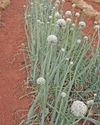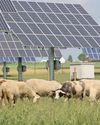
Owls and bats are specialised hunters. Research has consistently shown that they can make a big impact on reducing pest numbers on farms.
A pair of barn owls and their chicks feed on 2 000 to 6 000 rodents a year, according to research conducted by the Ministry of Agriculture in Israel.
Israel initiated a project to monitor the efficacy of barn owls for rodent control in crops in 1983 already, and following the success, increased owl boxes across the country to nearly 4 000 boxes today.
Many grain farmers there have shifted to using barn owls, and have reduced the use of pesticides or refrained from using them altogether, without an evident impact on yield. A research project looking at the impact of bats on insect damage caused to macadamia nuts in Levubu, Limpopo, found that damage caused by macadamia-nut borer and false codling moth could be reduced by 35% if sufficient numbers of bats and owls were present in the orchards. Removing the winged creatures from the orchards, on the other hand, resulted in a 60% reduction in yield.
Jordan-Michael Hardey, the communications manager at EcoSolutions, refers to bats as the ‘bug police’. “They fly around, catching insects using a process called echolocation to find their insect meals. They make high-pitched sounds that bounce off objects and return to the bat as echoes. Bats in flight can distinguish the difference in sound between a tree, your head and an insect, which is how they locate their food in the dark.”
About 70% of all bats eat insects, with each eating half their weight in insects a night. Bats are also responsible for pollinating fruit like avocados, bananas, dates, figs, mangoes and peaches, and they spread seeds.
Esta historia es de la edición November 24, 2023 de Farmer's Weekly.
Comience su prueba gratuita de Magzter GOLD de 7 días para acceder a miles de historias premium seleccionadas y a más de 9,000 revistas y periódicos.
Ya eres suscriptor ? Conectar
Esta historia es de la edición November 24, 2023 de Farmer's Weekly.
Comience su prueba gratuita de Magzter GOLD de 7 días para acceder a miles de historias premium seleccionadas y a más de 9,000 revistas y periódicos.
Ya eres suscriptor? Conectar

When short-term rentals make sense
Bianca Smit, national operations manager at CFAO Equipment SA, outlines factors to consider when choosing a rental equipment partner.

The timing of onion sowing is critical
Each onion variety has a different resistance to bolting, thus growers need experience and knowledge to guide them,

Understanding cannabis and hemp regulations in South Africa
South Africa's cannabis and hemp regulations remain a topic of debate and uncertainty, particularly when it comes to commercial use and small-scale production. Cannabis experts Shaad Vayej and Trenton Birch spoke to Octavia Avesca Spandiel about the challenges that small-scale cannabis and hemp farmers face.

European seed's influence on the US cannabis market
The expansion of European cannabis seed onto the US market is not just about economic growth; it’s also about enriching the landscape of US cannabis with diversity, innovation and education,

'It's important to get the right tool for the job'
The adoption of technology is crucial to sustaining efficiency gains and beating the cost-price squeeze in the agriculture sector.

A brilliant bushveld break between Bela-Bela and Modimolle
The distinctive touch, diligence, and 24/7 customer care are just a few of the reasons you should visit four-star Tourism Council-graded Pumula Game Farm,

John Deere: elevating performance and efficiency in modern farming
In the fast-paced world of farming, the right tools make all the difference.

The naval disaster Winston Churchill tried to hide
Three British warships were sunk by German naval gunfire on a dark day early in World War II, but the heroes who fought back received only muted recognition, possibly to avoid bad publicity,

Breaking down the principles of regenerative farming
Jean Hugo, a post-graduate student at the Tshwane University of Technology, and Leon Hugo, author on environmental matters and former professor of geography at the University of Pretoria, write about the importance of regenerative agriculture for small-scale farmers, and the challenges related to making the shift.

Ectoparasite control: more tips for livestock farmers
To reduce the mayhem that uncontrolled ectoparasites can create for communal farmers, it’s best to adopt a holistic approach in conjunction with veterinary remedies,